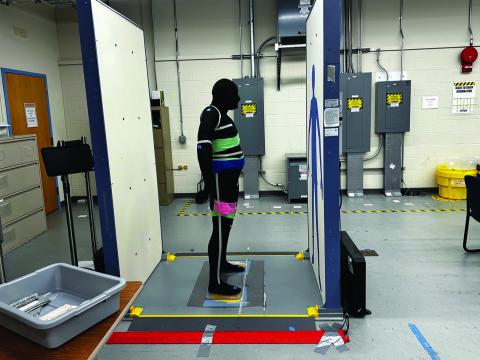Intelligence Sharing and Cooperation Enable Homeland Security
Homeland Security Conference 2013 Show Daily, Day 2
In the aftermath of the 9/11 terrorist attacks, the military, government and intelligence officials all agreed that federal agencies needed to be more willing and able to share critical data to better connect the dots.
While agencies at all levels—federal state and local—have made progress, officials continue to push for ever greater sharing and cooperation, not just within government but with industry and the general public as well. For example, while the departments of Defense, Justice and Homeland Security can and do now share biometrics data housed in the disparate databases, they continue tweaking technology to improve data sharing even further.
But now, some officials argue for a greater partnership between government and industry in the area of cybersecurity and critical infrastructure protection. A strong relationship with the local power company and willing volunteers can be essential to recovery following a national disaster. Even social media can play a role—tweets from the public can provide essential situational awareness about where fuel, food, electricity and water are available.
Intelligence sharing, interoperability, partnerships, relationships and cooperation were among the most commonly used terms among speakers and panelists during the second day of the AFCEA Homeland Security Conference in Washington, D.C.
Gen. Michael Hayden, USAF (Ret.), former director of the Central Intelligence Agency, kicked off the discussion during his morning keynote speech. Gen. Hayden reported that the executive order on cyber goes as far as the president is able in prompting greater sharing between the government—namely, the National Security Agency—and the private sector. Hayden described the executive order as “regrettable but necessary” because “we got no action from Congress last year.” President Obama took the elements he could from failed cyber legislation and included it in the order, according to Hayden, but offering “the sweetener,” the incentives for private sector cooperation would have been beyond the president’s power, he said.
The general acknowledged that the idea of government—especially the NSA—working with the private sector on cyber protection creates privacy concerns. “We are arguing in the West about what we perceive as a steel-caged death match between security and privacy, but the poles of argument are not very wide. We’re actually arguing over a pretty small space,” Hayden asserted.
The intelligence sharing theme continued with the Biometrics/Identity Management panel. Donald Salo, the new director of the Defense Forensics and Biometrics Agency, revealed that the Defense Department is developing international agreements to share biometrics data. Six cooperative agreements already are in place with others in the works, Salo revealed. He added that biometrics data recently prevented one suspect from joining the Afghan police force and another from joining the U.S. Army.
Of course, the Intelligence and Information Sharing panel continued the themes of sharing and cooperation with much of the discussion centering around the National Network of Fusion Centers and the role they play in homeland security.
Panel members agreed that the fusion centers have made a lot of progress under difficult circumstances—such as very little guidance. While the centers receive federal grant funding, they are local entities sharing information with each other and with state and federal agencies, as well. Congress oversees the funding, but not the centers’ operations, explained Christian Bechner, former staff member of the Senate Homeland Security Committee. “Congress does not—nor should it have—direct authority over fusion centers,” said.
It was the Emergency Management panel that most expanded the discussion of cooperation and relationships beyond sharing between government agencies. Panelists stressed the importance of volunteers in aiding recovery following disasters. Even social media can provide critical intelligence, said Jack Brown, director of Emergency Management, Arlington County, Virginia. “Social media can be your best friend or your worst enemy. Following [super storm] Sandy, we were getting a lot of information from Twitter. “Emergency management is really about tying together the government, private sector and the public, he added. “If local government doesn’t have a good relationship with the local power company, shame on them,” he said.
Brown reported that the county’s emergency 911 service once went down, and the county government didn’t know until notified by the phone carrier, who revealed and fixed the problem.
The Mobile Communications panel focused largely on interoperability, especially within the Department of Homeland Security with its disparate agencies and missions. Shawn Lapinski, the chief interoperable architect for Department of Homeland Security Joint Wireless Program Office within the Customs and Border Protection (CBP) agency, revealed that he had received a tablet device the same morning as the panel as part of the department’s mobility program.




Comments